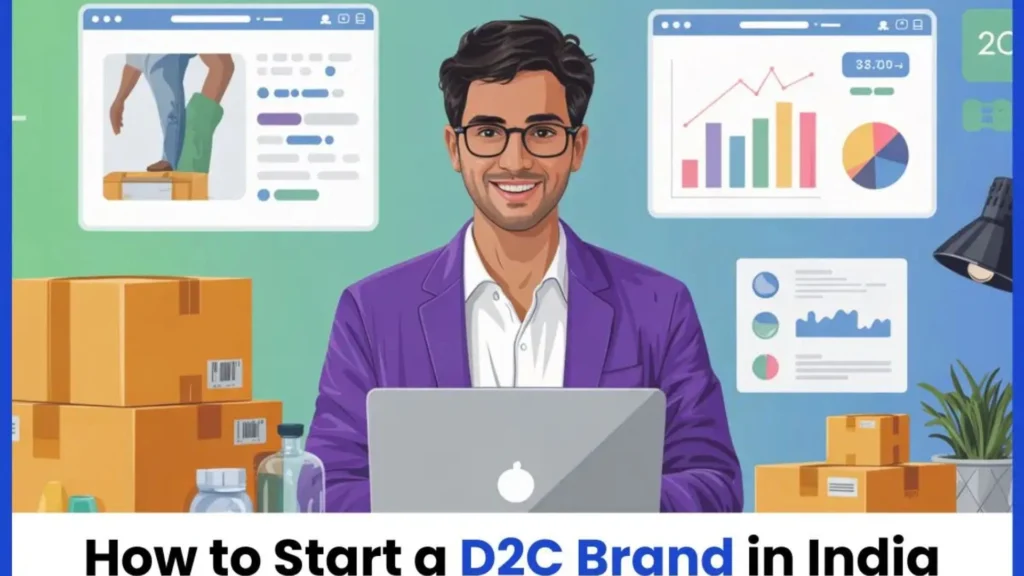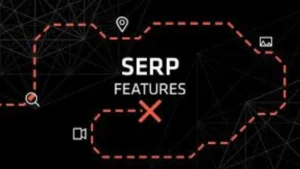The Direct-to-Consumer (D2C) revolution in India has changed how people buy things and how brands work. What began as a small business model has grown into one of the biggest drivers of India’s eCommerce growth. Social media, influencer marketing, and digital payment systems have made it easier than ever to launch a D2C brand — but also tougher to stand out.
This guide is for entrepreneurs who want to create their own D2C brand in India. We’ll take you through each step — from studying the market to growing your business.
Understanding the D2C Model
A Direct-to-Consumer brand sells its products straight to customers. It doesn’t use third-party retailers, distributors, or marketplaces like Amazon or Flipkart. These brands control their own sales channels — through their website or app. This gives them full control over the customer journey, pricing, branding, and data.
The D2C model proves effective in India. It allows startups to build strong ties with consumers while keeping expenses in check. This creates a win-win situation: brands get higher profit margins, and customers enjoy better prices and tailored experiences.
The Booming D2C Market in India
Statista reports that the Indian D2C market had a value of about USD 18.6 billion in 2023. This market looks set to hit USD 74 billion by 2030, with a growth rate of 23% per year.
India now has over 800 D2C brands up and running. These brands sell everything from beauty products and clothes to personal care items, food, and stuff for the home. Some brands like Mamaearth, Boat, Wakefit, and Lenskart have become well-known names. Their success shows that homegrown D2C companies can grow big.
Several factors are behind this growth trend:
- Quick growth of internet and smartphone use
- Digital payments taking off (UPI transactions went over 10 billion in 2024)
- Younger buyers looking for real and easy-to-use products
- Low-cost online store platforms like Shopify, WooCommerce, and Wix
- Social media helping brands tell their stories and use influencers to market
How to Start a D2C Brand in India: A Step-by-Step Guide
1. Find a Profitable Market
To begin, you need to spot a gap in the market or a problem that current brands haven’t fixed. Start by asking:
- How can your product fix problems?
- Who do you want to buy your product (age, how much they earn, what they like)?
- Are there other brands doing this, and how can you stand out?
Try out platforms like Google Trends SEMrush, and Statista to examine demand patterns and product trends. Case in point: Sugar Cosmetics spotted a gap in the market when it launched. Indian women wanted makeup that was budget-friendly, cruelty-free, and long-lasting. This niche allowed the company to grow .
2. Check If Your Product Idea Works
Before you pour money into production make sure your idea has legs. You can do this through surveys, prototypes, or pre-orders. Platforms like Typeform, Google Forms, or even polls on social media can help you gauge interest.
Get a small group to try out your product and give you honest feedback. This step helps you fine-tune your packaging, pricing, and how you position your brand before you go all-in with a launch.
3. Create a Memorable Brand Identity
A D2C brand relies on storytelling. Your brand should have a clear goal that strikes a chord with your audience. Focus on:
- A catchy brand name and easy-to-remember logo
- A consistent color scheme and font style
- A compelling brand story (the reason behind your business)
Example: The Man Company created its brand around modern masculinity and self-care, which resonated with its target market.
4. Create Your Product and Supply Chain
Team up with manufacturers to ensure quality and room for growth. For small runs, think about local manufacturers to keep costs down.
You’ll also need to keep track of stock, packaging, and shipping. Many new businesses use outside companies like Shiprocket, Delhivery, or Pickrr to handle delivery and returns .
5. Create Your D2C Website
Your website serves as your shop front, sales tool, and brand center. Pick a platform such as:
- Shopify – Easy to use with lots of add-ons
- WooCommerce – Perfect for WordPress fans
- Magento – Ideal for big companies
Make sure your site loads , works well on phones, and ranks well in search results. A top-notch D2C website includes:
- Top-notch images and product details
- Feedback from buyers
- Easy checkout and safe payment options
- Links to CRM and data tools
6. Create Your Online Marketing Plan
This is where the real work begins. To draw in, connect with, and keep customers, use a blend of free and paid methods:
a. Social Media Campaigns
Use sites like Instagram, Facebook, and YouTube to tell your story . Show your product in action, give peeks behind the scenes, and team up with small-scale influencers.
b. SEO and Content Creation
Create blog posts, product pages, and step-by-step guides that address your customers’ concerns. Target specific search terms like “top eco-friendly skincare in India” or “budget-friendly direct-to-consumer fashion labels.”
c. Paid Advertising
Launch performance-driven campaigns on Meta Google, and YouTube to boost sales. Monitor your Customer Acquisition Cost (CAC) and Return on Ad Spend (ROAS) .
d. Email and SMS Marketing
Set up automated sequences to greet, develop relationships with, and reconnect with customers. Tailored campaigns encourage repeat buys.
7. Put Customer Experience First
In direct-to-consumer business, your customers speak for your brand. Provide top-notch service – from hassle-free returns to quick responses.
Set up chatbots, add feedback systems, and start loyalty programs. Keep in mind: keeping a customer costs five times less than getting a new one.
8. Use Data and Analytics
Monitor every customer interaction — from clicks to sales. Tools like Google Analytics, Hotjar, and Klaviyo help you grasp user behavior and boost performance.
Look at your:
- Conversion rates
- Cart abandonment
- Repeat purchase rates
- Customer lifetime value (CLV)
Choices based on data lead to smarter growth.
9. Create Strategic Partnerships
Team up with influencers, affiliates, or other brands to promote each other. You can also join forces with logistics, packaging, or tech providers to improve operations.
Example: Boat joined forces with famous people and big events like IPL to get more people to see and trust their brand.
10. Grow and Branch Out
When your brand takes off, look into:
- Fresh product lines
- Real-world experiences (temporary stores or stands)
- Shipping worldwide (to Indians living abroad)
Stay quick on your feet and keep coming up with new ideas. Winning in D2C means listening to what people want and always changing to meet their needs.
Usual Hurdles D2C Startups Face
Starting a D2C brand is thrilling, but it’s not without its problems:
- High customer acquisition costs because of ad competition
- Scaling logistics as orders increase
- Inventory management to avoid overstocking
- Building trust without a physical store
To tackle these, concentrate on natural growth, powerful branding, and dedicated communities.
Future of D2C in India
The outlook is promising. Statista predicts that more than 70% of Indian shoppers will buy from brand websites by 2030. New trends include:
- Shopping with voice commands and AI suggestions
- Subscription plans for repeat buys
- Branding that highlights sustainability
- Marketing tailored to each person through data analysis
As India’s digital infrastructure grows, D2C continues to shake up traditional retail — opening up countless chances for creative business owners.
Why Choose Modifyed Digital to Launch and Expand Your D2C Brand
Creating a D2C brand needs vision, creativity, and solid digital know-how — and that’s where Modifyed Digital steps in. As one of India’s top digital marketing firms, Modifyed focuses on helping new and established D2C brands grow through number-crunching marketing, SEO high-impact advertising, and content planning.
Whether you’re taking your first steps in D2C or aiming to expand, Modifyed Digital provides tailored plans to enhance your visibility, boost your sales, and build stronger customer loyalty. Their team blends imaginative storytelling with technical accuracy to produce measurable outcomes across different platforms.
With extensive experience collaborating with eCommerce, lifestyle, and startup brands, Modifyed has a deep understanding of Indian consumers’ preferences — and knows how to transform your brand into a market leader.
If you’re committed to creating a lasting D2C brand team up with Modifyed Digital — your growth partner in India’s competitive online marketplace.
Conclusion
Starting a D2C brand in India in 2025 is both exciting and rewarding. The ecosystem is mature, consumers are digitally savvy, and the opportunities are endless. With the right strategy — from niche selection and branding to marketing and analytics — you can build a D2C business that connects deeply with your audience.
Remember: success doesn’t come overnight. Test, learn, adapt, and most importantly, stay authentic to your brand’s vision. The D2C wave is here to stay — and it’s your time to ride it.
FAQs
1. How much money do you need to start a D2C brand in India?
The money you need at the start changes based on your product and size. A small D2C brand can begin with ₹5–10 lakhs, which covers making the product, setting up the website, marketing, and shipping. Using cheap tools and free marketing can cut costs at first.
2. What are the top platforms to launch a D2C store in India?
Shopify, WooCommerce, and Wix stand out as the top platforms because they have user-friendly interfaces and work well with Indian payment systems like Razorpay and Paytm. Shopify helps you grow fast, while WooCommerce lets you customize more.
3. How do D2C brands build trust without physical stores?
Trust comes from being open, delivering quality, and talking to customers. Show real product pictures, content from users, and reviews. Make returns easy and ship . Tell your brand’s story and give great customer service to create strong connections with buyers.
4. How can I drive traffic to my D2C website?
Combine SEO, social media marketing, influencer team-ups, and paid ads. Regular blog posts and email campaigns also attract and keep customers. Look at your numbers to fine-tune targeting and get the most bang for your buck.
Also Read:
Yellow Heart on Snapchat Meaning
Unlock Voice Search Optimization for Real Estate Businesses
How to use Meta Creator Studio for Instagram






